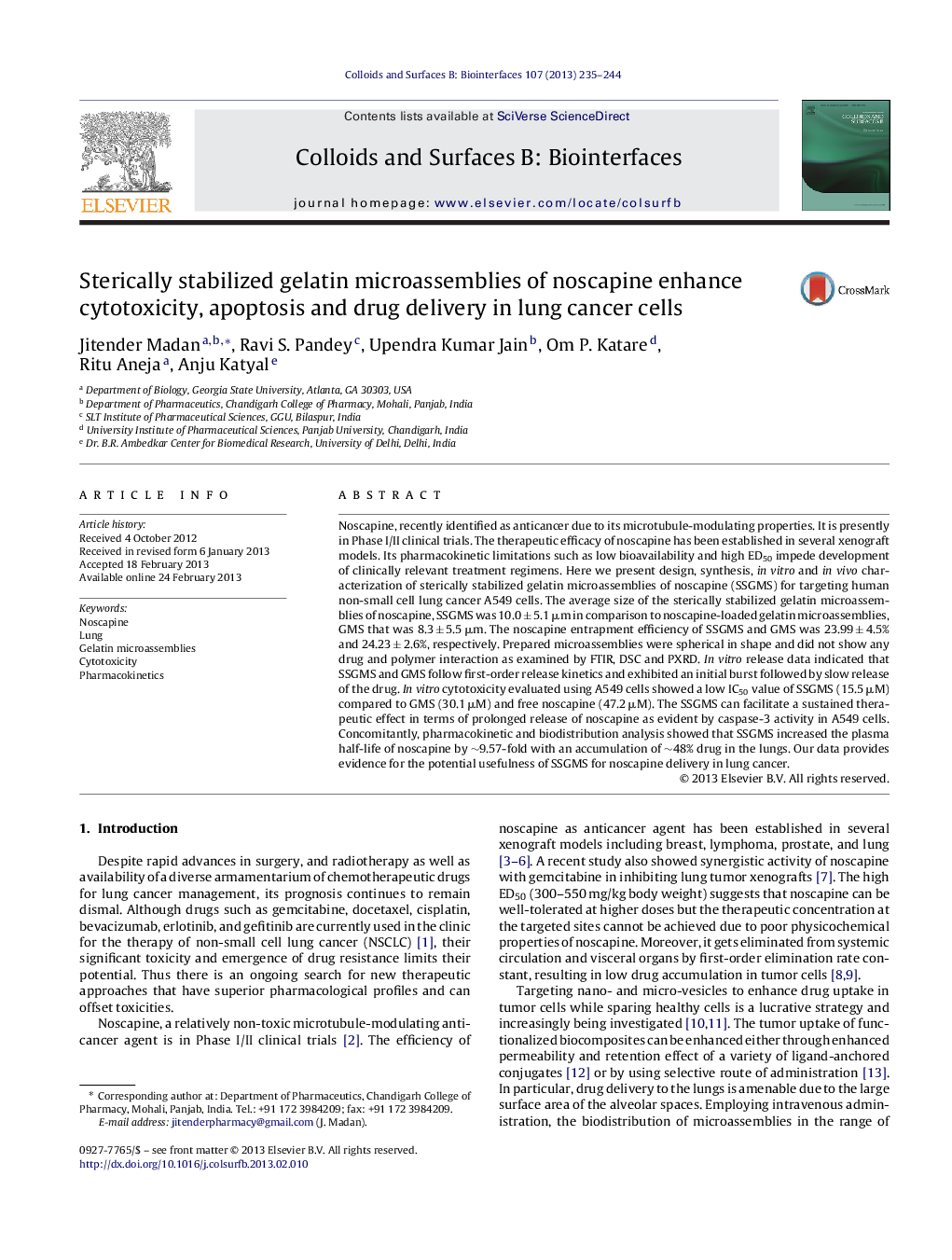| Article ID | Journal | Published Year | Pages | File Type |
|---|---|---|---|---|
| 600144 | Colloids and Surfaces B: Biointerfaces | 2013 | 10 Pages |
Noscapine, recently identified as anticancer due to its microtubule-modulating properties. It is presently in Phase I/II clinical trials. The therapeutic efficacy of noscapine has been established in several xenograft models. Its pharmacokinetic limitations such as low bioavailability and high ED50 impede development of clinically relevant treatment regimens. Here we present design, synthesis, in vitro and in vivo characterization of sterically stabilized gelatin microassemblies of noscapine (SSGMS) for targeting human non-small cell lung cancer A549 cells. The average size of the sterically stabilized gelatin microassemblies of noscapine, SSGMS was 10.0 ± 5.1 μm in comparison to noscapine-loaded gelatin microassemblies, GMS that was 8.3 ± 5.5 μm. The noscapine entrapment efficiency of SSGMS and GMS was 23.99 ± 4.5% and 24.23 ± 2.6%, respectively. Prepared microassemblies were spherical in shape and did not show any drug and polymer interaction as examined by FTIR, DSC and PXRD. In vitro release data indicated that SSGMS and GMS follow first-order release kinetics and exhibited an initial burst followed by slow release of the drug. In vitro cytotoxicity evaluated using A549 cells showed a low IC50 value of SSGMS (15.5 μM) compared to GMS (30.1 μM) and free noscapine (47.2 μM). The SSGMS can facilitate a sustained therapeutic effect in terms of prolonged release of noscapine as evident by caspase-3 activity in A549 cells. Concomitantly, pharmacokinetic and biodistribution analysis showed that SSGMS increased the plasma half-life of noscapine by ∼9.57-fold with an accumulation of ∼48% drug in the lungs. Our data provides evidence for the potential usefulness of SSGMS for noscapine delivery in lung cancer.
Graphical abstractFigure optionsDownload full-size imageDownload as PowerPoint slideHighlights► Recently, our group discovered tubulin binding properties of noscapine. ► We have synthesized sterically stabilized gelatin microassemblies of noscapine for targeting lung cancer cells. ► Sterically stabilized gelatin microassemblies displayed a potential to sustain therapeutic levels of noscapine in lung cancer cells. ► Sterically stabilized gelatin microassemblies increased the plasma half-life of noscapine by ∼9.57-fold with an accumulation of ∼48% drug in the lungs. ► Our study showed the potential usefulness of sterically stabilized gelatin microassemblies for noscapine delivery in lung cancer.
